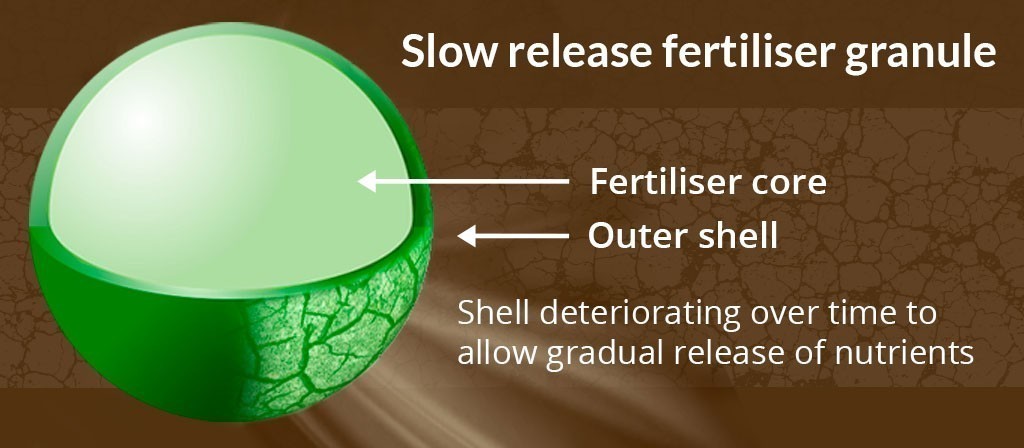Fertilisers provide mineral ions needed for healthy growth in plants. As plants grow they absorb mineral ions from the water in the soil through their root hair cells. Over time the concentration of these ions decreases so as gardeners we add a fertiliser to help the soil and feed the plants.
Plants require 17 essential nutrients to thrive. The four most important nutrients for plant growth are:
- • Nitrogen
- • Phosphate
- • Potassium
- • Sulphur
Fertiliser types and which is best?
Liquid Feeds
These products are a concentration of nutrients which needs to be diluted and applied either through a sprayer or a watering can. The diluted feed is absorbed by the plant through its leaves and is available to the plant immediately. Liquid feeds have to be applied on a regular basis usually fortnightly. Caution should be taken as if the concentration has been made incorrectly or application is made in the sunlight scorching of the plant leaves can occur. Although roses are hungry feeders little and often feeding can be beneficial but with liquid feed products, you need the time to regularly mix and apply.
Conventional Fertilisers
This type of fertiliser is normally nutrients mixed together in various nutrient percentages and made into a compound. A compound fertiliser is normally granular that contains exactly the same amount of nutrients per granule however is held together with a carrier ie ground limestone so in theory, when analysis informs you of 7-7-7 each granule will have 21% nutrient and 79% carrier.
Conventional fertilisers dissolve with water either via rainfall or garden irrigation. As the granule breaks down it releases all the nutrients at the same time into the soil. This can be an issue if excessive rainfall occurs and the nutrients are washed through the soil profile and into the local waterways which is not very environmental or financially beneficial to the gardener in bypassing the plants. Conventional fertiliser nutrients release over a 3-4 week period with normally a flush of growth initially as the plant takes up the nutrients, but gradually the nutrients fade and so does the growth so subsequent applications are required.
Organic-based Fertilisers
Organic-based fertilisers are normally made from animal byproducts i.e blood meal, bone meal, feather meal, kelp and chicken manure. Environmentally friendly but on occasions the analysis of the fertiliser may vary from one batch to another unless tested on a regular basis. Like conventional fertilisers, the nutrients will release once there is rainfall or irrigation and will release over a 3-4 week period. Unlike conventional fertilisers, there will be no carrier with this type of product.
Controlled Release fertilisers
These types of fertilisers have nutrients blended together and have the ability to release nutrients on a trickle feed basis over a certain length of time. The blended nutrients are coated in a polymer which as weather conditions prevail I.e sun, rain, and temperature changes the granule outer layer cracks and slowly releases its nutrients. Due to the advancements in controlled-release fertilisers, these products are usually more expensive. The cost comparison between conventional and controlled release fertiliser can be offset by the reduced amount applied normally you will need at least two applications of conventional fertiliser compared to one application of controlled-release fertiliser.

The advantage of a controlled release fertiliser over a conventional fertiliser is the trickle feed effect, when applying such products you may not see that flush of growth that you would expect when applying a fertiliser but the benefits to the plants’ health are greater as it will continue to have the correct feed for a longer period of time.
Nutrients cannot be absorbed if there is not enough water within the soil profile but also if the ground temperature is too low therefore if the plant is in a dormant state then the nutrients will not be wasted. Controlled release fertiliser releases their nutrients normally over a 16-18 week period and in some cases unto 36 weeks, therefore, allowing one application per growing season-saving money on repeat application

